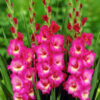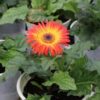**Marigolds and Endemic Species: Protecting Biodiversity and Ecosystems**

In the intricate tapestry of ecosystems around the world, marigold flowers stand as vibrant symbols of biodiversity and interconnectedness. As we explore the relationship between marigolds and endemic species—those unique to specific regions—we uncover the profound importance of preserving biodiversity, protecting habitats, and fostering coexistence among all living beings. Marigolds, with their resilience and universal appeal, inspire us to recognize the intrinsic value of endemic species and the critical role they play in maintaining ecological balance and sustaining life on Earth. Let’s delve into this intricate web of life, celebrating the beauty of marigolds while advocating for the conservation of endemic species and their habitats.
**1. Endemic Species: Guardians of Biodiversity**
Endemic species, found exclusively in particular regions or habitats, are the custodians of biodiversity, embodying the unique evolutionary processes and ecological niches of their respective ecosystems. From the lush rainforests of the Amazon to the arid deserts of Australia, endemic species have adapted to specific environmental conditions, forming intricate relationships with other organisms and shaping the landscapes they inhabit. These species, often facing threats such as habitat loss, climate change, and invasive species, serve as indicators of ecosystem health and resilience, highlighting the importance of conservation efforts to protect their habitats and ensure their survival for future generations.
**2. Marigolds: Global Ambassadors of Diversity**
Marigold flowers, with their radiant blooms and aromatic foliage, serve as global ambassadors of diversity, captivating people around the world with their beauty and resilience. While marigolds are not endemic to any specific region, they play a crucial role in ecosystems as pollinator attractors, soil stabilizers, and pest repellents, supporting biodiversity and ecosystem services in agricultural landscapes and urban environments alike. Through their adaptability and widespread cultivation, marigolds symbolize the interconnectedness of life and the importance of protecting habitats and species diversity for the well-being of all living beings.
**3. Conservation Challenges and Solutions**
The conservation of endemic species faces numerous challenges, including habitat destruction, climate change, pollution, and overexploitation. As human activities continue to exert pressure on ecosystems, endemic species are increasingly threatened with extinction, leading to the loss of genetic diversity, ecological functions, and cultural heritage. To address these challenges, conservation efforts must prioritize habitat restoration, protected area management, and community engagement, fostering collaboration among governments, NGOs, and local communities to safeguard endemic species and their habitats.
**4. Marigolds and Habitat Enhancement**
Marigold flowers offer valuable insights and solutions for habitat enhancement and restoration efforts aimed at conserving endemic species and promoting biodiversity. With their ability to thrive in diverse environments and climates, marigolds can be used to revegetate degraded lands, stabilize soils, and provide habitat and food sources for pollinators and other wildlife. By incorporating marigolds into restoration projects such as agroforestry, riparian buffer zones, and urban green spaces, conservationists can enhance habitat connectivity, improve ecosystem resilience, and promote the coexistence of endemic species and human communities.
**5. Community Engagement and Education**
In conclusion, marigold flowers inspire community engagement and education initiatives that raise awareness about the importance of protecting endemic species and conserving biodiversity. Through educational programs, citizen science projects, and ecotourism initiatives, communities can learn about the ecological significance of endemic species and their habitats, while engaging in conservation activities that promote sustainable land use practices and foster a sense of stewardship and responsibility towards the natural world. By incorporating marigolds into community gardens, school curricula, and public events, we can celebrate the beauty of biodiversity and inspire future generations to become advocates for the protection of endemic species and the preservation of ecosystems for the benefit of all life on Earth.
In conclusion, marigold flowers and endemic species are interconnected in a delicate web of life, highlighting the importance of biodiversity conservation and ecosystem protection for the well-being of present and future generations. Through our collective efforts to protect habitats, conserve species diversity, and promote sustainable land use practices, we can ensure the continued coexistence of marigolds and endemic species, preserving the beauty and richness of our natural world for generations to come.

